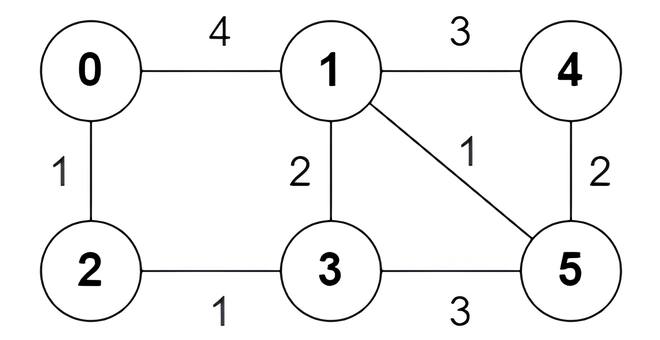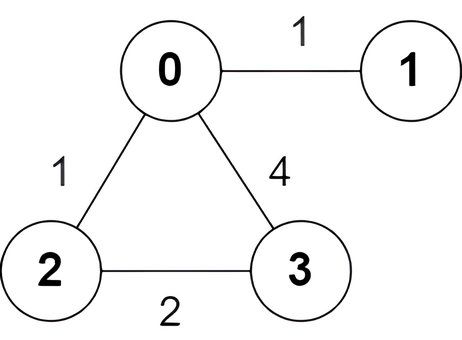3123. Find Edges in Shortest Paths
3123. Find Edges in Shortest Paths
Description
You are given an undirected weighted graph of n nodes numbered from 0 to n - 1. The graph consists of m edges represented by a 2D array edges, where edges[i] = [ai, bi, wi] indicates that there is an edge between nodes ai and bi with weight wi.
Consider all the shortest paths from node 0 to node n - 1 in the graph. You need to find a boolean array answer where answer[i] is true if the edge edges[i] is part of at least one shortest path. Otherwise, answer[i] is false.
Return the array answer.
Note that the graph may not be connected.
Example 1:

1 | Input: n = 6, edges = [[0,1,4],[0,2,1],[1,3,2],[1,4,3],[1,5,1],[2,3,1],[3,5,3],[4,5,2]] |
Example 2:

1 | Input: n = 4, edges = [[2,0,1],[0,1,1],[0,3,4],[3,2,2]] |
Constraints:
2 <= n <= 5 * 10^4m == edges.length1 <= m <= min(5 * 10^4, n * (n - 1) / 2)- 0 <= ai, bi < n
- ai != bi
- 1 <= wi <= 10^5
- There are no repeated edges.
Hints/Notes
- use dijkstra’s algorithm to find the minimum cost to get to each point, then use dfs/bfs to get to all points
Solution
Language: C++
1 | class Solution { |